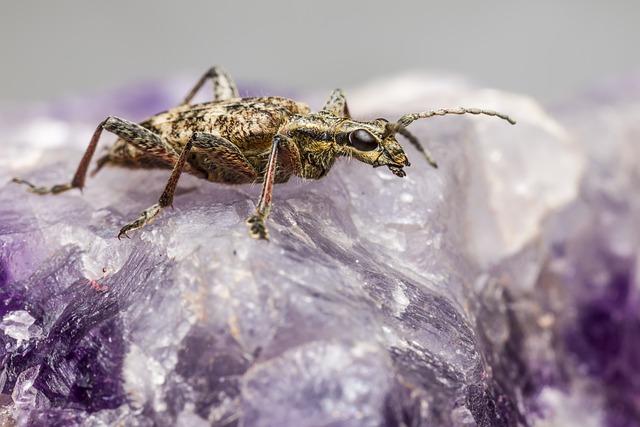Rodent and insect infestations in commercial spaces pose significant challenges related to hygiene, customer satisfaction, and legal compliance, especially in food service, retail, and healthcare industries. Effective ant control involves identifying entry points, robust sanitation practices, and tailored methods like baiting systems or professional insecticide applications. Maintaining a clean and safe environment is crucial through regular inspections, sealing entry points, proper ventilation, clean spaces, comprehensive sanitation, and integrated pest management (IPM) techniques to prevent ant infestations in commercial properties.
In the pursuit of clean and safe environments, particularly in commercial spaces, understanding and managing rodent and insect infestations are paramount. This article delves into the intricate world of pest control, focusing on ant control for commercial properties. We explore the root causes and significant health risks associated with pest presence, offering practical strategies for effective ant management and long-term prevention techniques to ensure a peaceful, safe sanctuary for business operations.
Understanding Rodent and Insect Infestations in Commercial Spaces
Rodent and insect infestations in commercial spaces can pose significant challenges, impacting hygiene, customer satisfaction, and even legal requirements. Understanding these issues is crucial for maintaining clean and safe environments, particularly in industries like food service, retail, and healthcare where pest presence can directly affect operations and health standards.
Commercial properties often attract pests due to the availability of food sources, water, and shelter. Ant control, for example, is a common concern as ants can quickly establish colonies and spread across large areas, contaminating surfaces and products. Effective management requires identifying entry points, implementing sanitation practices, and employing tailored pest control methods such as baiting systems or professional insecticide applications to mitigate infestations successfully.
The Impact of Pests on Health and Safety
Pests, such as rodents and insects, can have a significant impact on health and safety in various environments, especially in commercial spaces like restaurants, offices, and industrial facilities. Their presence can lead to severe consequences, ranging from transmitting diseases to causing structural damage. For instance, ants alone are known carriers of bacteria and parasites, which can contaminate food sources and pose a serious risk to public health. In commercial properties, ant control is paramount to ensure food safety standards are met, especially in the culinary industry.
Moreover, rodents like mice and rats can cause extensive harm to buildings by gnawing through wires, insulation, and even wood structures. This not only leads to costly repairs but also creates fire hazards due to damaged electrical systems. Moreover, their droppings and urine can trigger allergies and respiratory issues in people, making pest control an essential aspect of maintaining a clean and safe environment for employees and customers alike.
Effective Ant Control Strategies for Commercial Properties
Maintaining a clean and safe environment in commercial spaces is paramount, especially with ant infestations. Effective ant control strategies are crucial for businesses to ensure a healthy and productive workspace. One of the first steps is identifying ant entry points; these can be through cracks, seals, or even plumbing issues. Sealing these access points with caulk or weatherstripping is an excellent preventive measure. Regular sanitation and proper food storage practices are essential; ensuring all food scraps are promptly cleaned up and sealed containers are used can significantly deter ants.
Professional pest control services offer tailored solutions using eco-friendly products when possible. Bait stations, for instance, are effective as they lure ants with a non-toxic substance that eventually eliminates the colony. The use of insect growth regulators (IGRs) is another method, disrupting ant reproduction and reducing colony numbers over time. Regular inspections by professionals are vital to monitor ant activity and adjust control strategies accordingly, ensuring long-term success in ant control for commercial properties.
Long-Term Prevention and Maintenance Tips for Pest-Free Environments
To achieve and maintain a pest-free environment, especially in commercial properties, adopting long-term prevention strategies is key. Regular inspections are crucial to identifying potential entry points for rodents and insects, allowing for prompt action. Sealing gaps and cracks, ensuring proper ventilation, and maintaining clean spaces significantly reduce the risk of infestations. Implementing a comprehensive sanitation program, including regular waste management and cleaning routines, creates an unappealing environment for pests.
Additionally, using integrated pest management (IPM) techniques offers a sustainable approach. This involves monitoring, identifying, and controlling pests through a combination of methods like natural predators, traps, and targeted treatments. For ant control in commercial properties, focusing on eliminating food sources and water access points is vital. Regular cleaning, sealing food storage areas, and addressing any leaks can greatly hinder ant activity, ensuring a cleaner and safer working environment.
Maintaining a clean and safe environment in commercial spaces is paramount, and effectively managing rodent and insect infestations plays a crucial role. By understanding the impact of pests on health and safety, implementing robust ant control strategies tailored to commercial properties, and adopting long-term prevention and maintenance practices, businesses can create a pest-free haven for employees and customers alike. These comprehensive measures not only safeguard public health but also contribute to a positive and productive work environment. In terms of ant control for commercial properties, proactive steps today can prevent costly damages and ensure a thriving, insect-free tomorrow.
